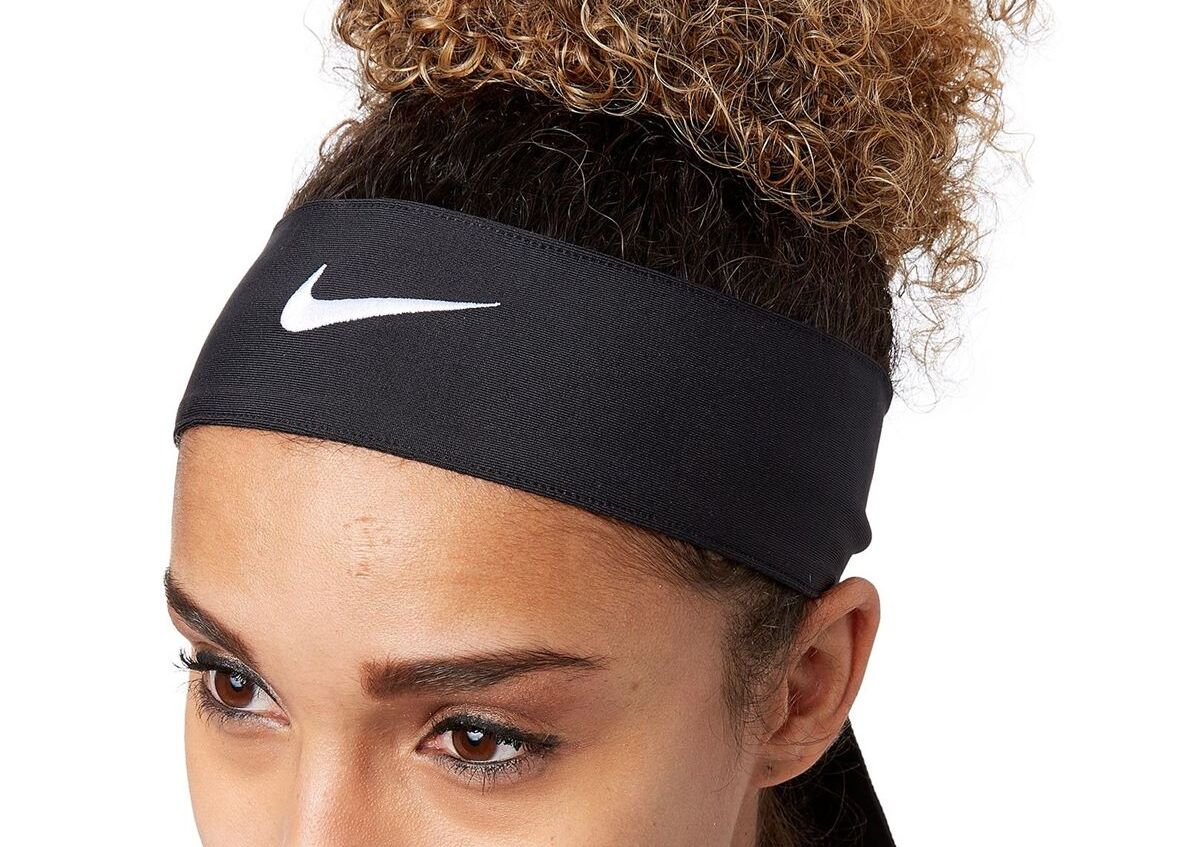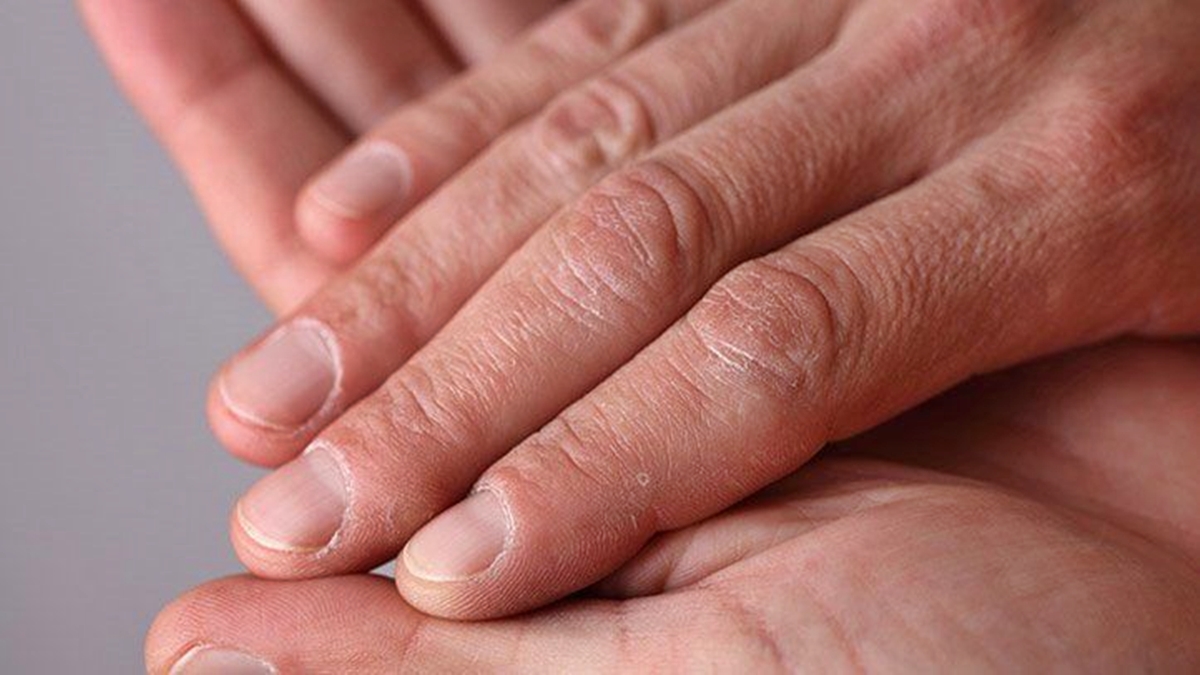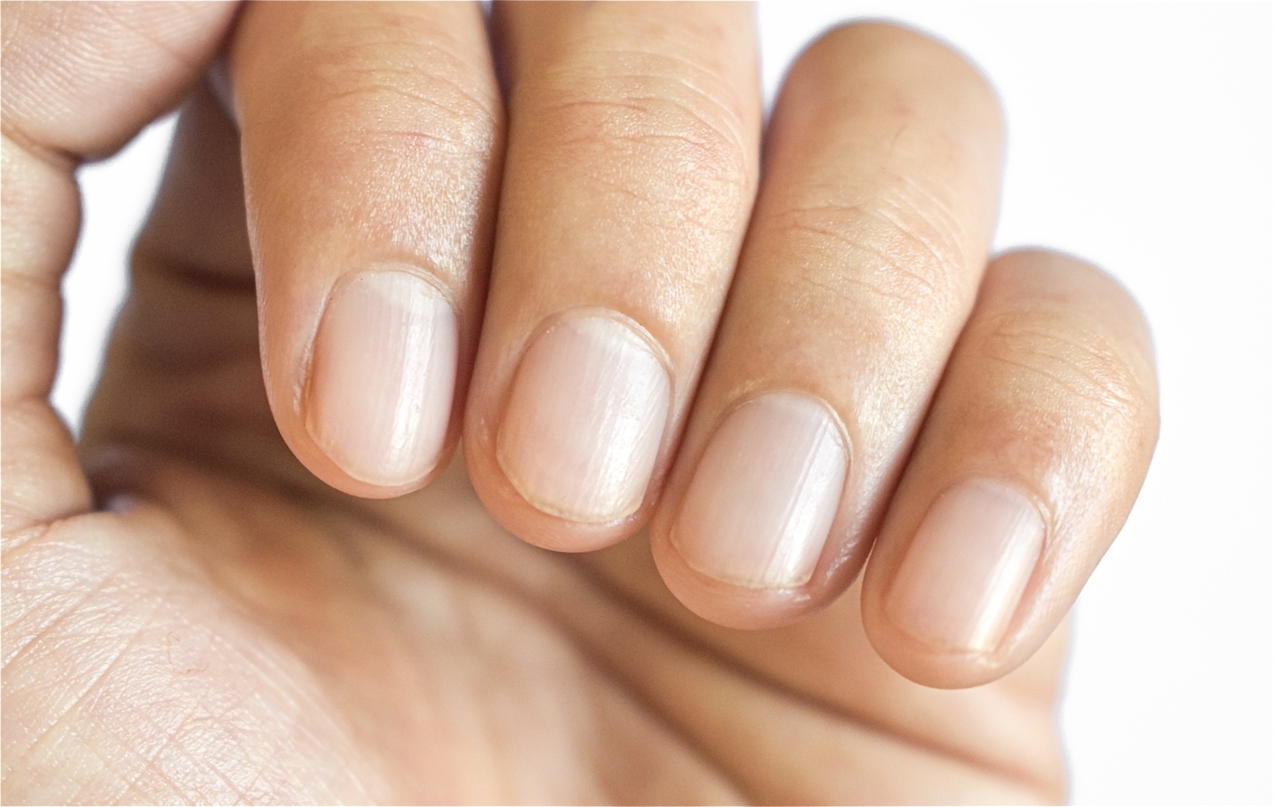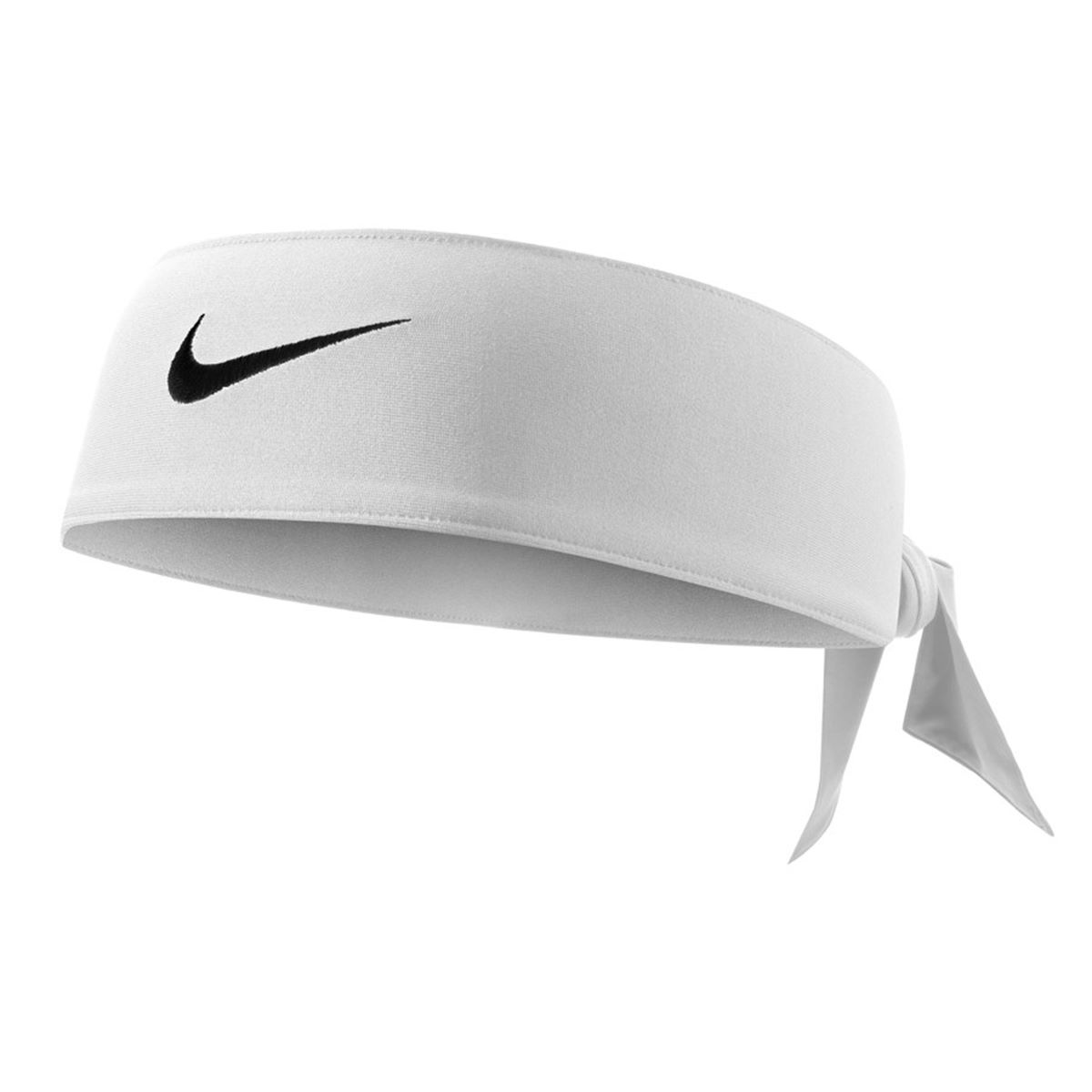

Featured
How To Improve Hair Health
Published: September 8, 2023
Discover the top tips and tricks to improve your hair health with our featured article. Enhance the strength and shine of your locks with these expert-recommended techniques.
Introduction
Having healthy and vibrant hair is something that many people strive for. Our hair is not only a defining feature of our appearance but also plays a crucial role in our self-confidence and overall well-being. However, maintaining optimal hair health can sometimes be a challenge, especially with factors like pollution, stress, and unhealthy lifestyle habits. Fortunately, there are various ways to improve hair health and achieve luscious locks.
Understanding the basics of hair health is essential in order to take proper care of our hair. Our hair is made up of a protein called keratin, which is produced in the hair follicles. The health of our hair mainly depends on the health of these follicles. Hair follicles require adequate nourishment and a favorable environment to promote healthy hair growth.
Common hair problems such as dullness, dryness, frizz, and hair loss can be signs of underlying hair health issues. Understanding the causes of these problems can help us address them effectively. Factors like improper hair care practices, excessive use of heat styling tools, and exposure to harsh environmental conditions can contribute to hair damage.
To improve hair health, adopting healthy hair care practices is crucial. This includes using the right hair products, following proper hair washing techniques, and avoiding excessive heat styling. Additionally, a well-balanced diet rich in essential nutrients plays a vital role in promoting healthy hair growth. Nutrients like vitamins, minerals, and proteins are essential for maintaining strong and nourished hair.
There are also natural remedies that can be incorporated into our hair care routine. Natural oils, such as coconut oil and argan oil, have been used for centuries to nourish and condition the hair. Additionally, ingredients like aloe vera and apple cider vinegar can help with scalp health and hair growth.
While taking care of our hair is important, it is also essential to seek professional help when necessary. If experiencing excessive hair loss or persistent hair problems, consulting a dermatologist or trichologist can provide valuable insights and personalized treatment options.
In this article, we will explore various aspects of hair health and provide practical tips to improve and maintain healthy hair. By implementing these strategies and making hair health a priority, you can achieve beautiful and vibrant hair that shines with vitality.
Understanding Hair Health
To improve hair health, it is essential to have a clear understanding of how hair works and what factors contribute to its overall health. Our hair is made up of a protein called keratin, which is produced in the hair follicles located in the scalp. Each hair strand grows from a single follicle and goes through a cycle of growth, rest, and shedding.
The health of the hair follicles directly impacts the health of our hair. When the follicles receive proper nourishment and are in a favorable environment, they produce strong and healthy hair strands. On the other hand, when the follicles are deprived of nutrients or are exposed to damaging factors, hair problems such as breakage, dullness, and hair loss may occur.
The hair cycle consists of three main phases: anagen, catagen, and telogen. The anagen phase is the active growth phase where the hair strand is formed and can last for several years. The catagen phase is a transitional phase where the hair follicle shrinks and detaches from the blood supply. The telogen phase is the resting phase where the old hair is shed and a new strand begins to grow in its place.
Hair problems can arise when there is an imbalance in the hair cycle or when the follicles become damaged. This can occur due to a variety of factors, including hormonal changes, nutritional deficiencies, stress, certain medications, and excessive use of styling products and heat tools.
It is important to note that everyone’s hair is unique, and what works for one person may not work for another. Factors such as hair type, texture, and genetic predisposition play a role in determining the overall health and appearance of our hair. Therefore, it is crucial to tailor hair care routines and treatments to suit individual needs.
Understanding the basics of hair health allows us to take the necessary steps to care for our hair effectively. By adopting healthy hair care practices, nourishing our hair with the right nutrients, and addressing any underlying issues, we can improve the overall health and vitality of our hair.
In the following sections, we will delve deeper into the common hair problems that many people experience and explore the factors that can affect hair health. By gaining a comprehensive understanding of these factors, we can make informed choices and implement strategies to promote healthy and beautiful hair.
Common Hair Problems
Many individuals struggle with various hair problems that can affect the overall appearance and health of their hair. These issues can range from dryness and frizz to excessive hair loss. Understanding these common hair problems is essential in order to address them effectively and improve the overall health of our hair.
One of the most common hair problems is dryness. Dry hair lacks moisture and appears dull and brittle. This can be caused by a variety of factors, including overexposure to heat styling tools, excessive washing, and using harsh hair products that strip the hair of its natural oils. Dry hair often leads to frizz and breakage, making it difficult to manage and style.
Another common hair problem is oily scalp and greasy hair. This occurs when the scalp produces an excess amount of oil, known as sebum. This can be caused by factors such as hormonal imbalances, genetics, and even over-washing the hair. Oily hair can appear limp and greasy, making it challenging to maintain a fresh and voluminous look.
Hair loss is another prevalent issue that affects many individuals. While it is normal to lose a certain amount of hair every day, excessive hair loss can be concerning. Hair loss can be caused by a variety of factors, including genetics, hormonal changes, nutritional deficiencies, and certain medical conditions. Addressing the underlying cause of hair loss is crucial in order to promote hair regrowth and prevent further hair thinning.
Dandruff is yet another common hair problem that many people experience. It is characterized by dry, flaky scalp and is often accompanied by itchiness. Dandruff can be caused by a variety of factors, including fungal infections, dry skin, and even stress. It not only affects the scalp but can also lead to hair breakage and loss if left untreated.
Split ends are another hair concern that many individuals face. They occur when the hair shaft becomes damaged and splits into two or more ends. Split ends can be caused by factors such as excessive heat styling, chemical treatments, and rough hair handling. They make the hair appear frizzy and unmanageable, and if not addressed, can lead to further damage and breakage.
These are just a few examples of the common hair problems that people face. However, with proper care and attention, most hair problems can be minimized or even prevented. Through the implementation of healthy hair care practices, addressing underlying issues, and nourishing our hair with essential nutrients, we can improve the overall health and appearance of our hair.
Factors Affecting Hair Health
The health of our hair is influenced by various factors, both internal and external. Understanding these factors is essential in order to effectively improve and maintain the health of our hair. Let’s explore some of the key factors that can impact hair health.
1. Diet: Our diet plays a crucial role in the health of our hair. Nutrients like protein, vitamins, minerals, and omega-3 fatty acids are essential for healthy hair growth. A balanced diet that includes foods such as lean meats, fish, fruits, vegetables, and whole grains provides the necessary nutrients to support hair health.
2. Hormonal Changes: Hormonal changes can have a significant impact on hair health, particularly in women. Pregnancy, menopause, and conditions like polycystic ovary syndrome (PCOS) can lead to hormonal imbalances that affect hair growth and lead to hair loss or thinning.
3. Stress: High levels of stress can disrupt the natural hair growth cycle and lead to hair loss. It is important to adopt stress management techniques such as exercise, meditation, and proper sleep to maintain a healthy hair growth cycle.
4. Environmental Factors: External factors such as pollution, exposure to UV rays, and excessive heat or humidity can damage the hair shaft and lead to dryness, breakage, and dullness. Protecting the hair from these environmental factors can help maintain its health.
5. Hair Styling Practices: Excessive heat styling, frequent chemical treatments, and tight hairstyles like ponytails or braids can cause damage to the hair follicles and lead to breakage. It is important to use heat protectant products, limit the use of heat styling tools, and opt for gentler hairstyling options to prevent damage.
6. Genetics: Our genetic makeup plays a role in determining our hair type, texture, and other hair characteristics. Certain genetic conditions can also contribute to hair loss or thinning. While we cannot change our genetics, understanding them can help us adopt appropriate hair care practices.
7. Scalp Health: A healthy scalp provides a favorable environment for hair growth. Conditions like dandruff, scalp infections, or excessive oiliness can affect the hair follicles and lead to hair problems. Maintaining a clean and balanced scalp through regular cleansing and proper hygiene is important for overall hair health.
By taking these factors into account, we can make informed choices and adapt our hair care routine to promote optimal hair health. Understanding the interplay between internal and external factors allows us to address any underlying issues and implement strategies to achieve vibrant and healthy hair.
Healthy Hair Care Practices
To improve and maintain the health of our hair, it is essential to adopt healthy hair care practices. These practices involve proper cleansing, conditioning, and styling techniques that promote the overall well-being of our hair. Here are some key tips for maintaining healthy hair:
1. Proper Hair Washing: Washing your hair regularly is important to keep the scalp clean and free from dirt, oil, and product buildup. Use a gentle shampoo that is suitable for your hair type and concentrate the shampoo on the roots while avoiding excessive rubbing or pulling on the lengths of your hair. Follow with a conditioner to moisturize and nourish the hair strands.
2. Avoid Over-Washing: While it is important to keep the scalp clean, over-washing can strip the hair of its natural oils, leading to dryness and damage. Aim to wash your hair 2-3 times a week, or as needed based on your hair type and lifestyle.
3. Conditioning: Applying a conditioner after shampooing is essential to restore moisture and improve the manageability of your hair. Choose a conditioner that is appropriate for your hair type and apply it primarily to the lengths and ends of your hair. Let it sit for a few minutes before rinsing thoroughly.
4. Limit Heat Styling: Excessive use of heat styling tools like flat irons, curling irons, and blow dryers can damage the hair strands and lead to breakage. Whenever possible, allow your hair to air dry or use the lowest heat setting on styling tools. Apply a heat protectant spray before using any heat styling tools to minimize damage.
5. Gentle Brushing: Use a wide-toothed comb or a brush with soft bristles to gently detangle your hair, starting from the ends and working your way up. Avoid brushing wet hair, as it is more prone to breakage. If you encounter tangles, use a detangling spray or conditioner to make the process easier.
6. Protect from UV Rays: Just like our skin, our hair can be damaged by UV rays. When spending time outdoors, especially during peak sun hours, protect your hair by wearing a hat or using a UV protection spray or leave-in conditioner with SPF.
7. Avoid Tight Hairstyles: Tying your hair too tightly in hairstyles like ponytails, braids, or buns can cause unnecessary tension and lead to breakage. Opt for looser hairstyles and use hair accessories that are gentle on the hair, such as scrunchies made from soft fabric.
8. Trim Regularly: Regular hair trims every 6-8 weeks help to prevent split ends and keep your hair looking healthy. Trimming removes damaged ends, allowing the hair to grow stronger and preventing further breakage.
By implementing these healthy hair care practices, you can prevent damage, promote hair growth, and maintain the overall health and vitality of your hair. Remember, consistency and patience are key when it comes to achieving and maintaining healthy hair.
Balanced Diet for Hair Health
A balanced and nutritious diet is not only important for our overall health but also plays a significant role in maintaining the health of our hair. The nutrients we consume directly impact the growth, strength, and appearance of our hair. By incorporating specific foods into our diet, we can provide our hair with the essential nutrients it needs to thrive.
1. Protein: Our hair is primarily composed of a protein called keratin. Consuming an adequate amount of protein helps to promote hair growth and strengthen the hair shaft. Good sources of protein for hair health include lean meats, poultry, eggs, fish, legumes, and dairy products.
2. Omega-3 Fatty Acids: Omega-3 fatty acids are crucial for maintaining a healthy scalp and promoting hair growth. Foods rich in omega-3s include fatty fish like salmon and mackerel, chia seeds, flaxseeds, and walnuts.
3. Vitamins: Certain vitamins are essential for healthy hair growth. Vitamin A helps to produce healthy sebum, the natural oil that keeps the scalp moisturized. Vitamin C is important for collagen production, which is essential for hair structure. B vitamins, especially biotin and niacin, aid in the growth and strength of hair. Good sources of these vitamins include citrus fruits, dark leafy greens, carrots, eggs, nuts, and whole grains.
4. Minerals: Minerals like iron, zinc, and selenium are necessary for healthy hair growth. Iron helps to transport oxygen to the hair follicles, while zinc and selenium contribute to cell division and hair growth. Foods such as lean red meat, fish, oysters, nuts, seeds, and whole grains are rich sources of these minerals.
5. Antioxidants: Antioxidants help to protect the hair follicles from damage caused by free radicals. Foods high in antioxidants, such as fruits and vegetables, help to nourish the hair follicles and promote healthy hair growth.
6. Stay Hydrated: Drinking an adequate amount of water is crucial for maintaining hydrated and healthy hair. Water helps to keep the scalp and hair shaft moisturized, preventing dryness and brittleness.
While a balanced diet is important for hair health, it is also essential to avoid crash diets and extreme restrictions, as they can lead to nutritional deficiencies that can negatively impact hair growth. It is advisable to consult with a healthcare professional or a registered dietitian to ensure that your diet is well-balanced and tailored to your individual needs.
Incorporating these nutrient-rich foods into your diet can provide your hair with the building blocks it needs to grow strong, vibrant, and healthy. Remember, consistency and overall healthy eating habits are key to achieving and maintaining optimal hair health.
Essential Nutrients for Hair Growth
To promote healthy hair growth, it is important to ensure that your diet includes essential nutrients that provide the necessary building blocks for strong and vibrant hair. These nutrients play a crucial role in supporting hair follicle function, improving hair texture, and preventing hair loss. Let’s explore some of the key nutrients for hair growth:
1. Biotin: Biotin, also known as vitamin B7, is one of the most well-known nutrients for hair growth. It plays a key role in the synthesis of keratin, the protein that forms the structure of hair strands. Foods rich in biotin include eggs, nuts and seeds, sweet potatoes, and spinach.
2. Vitamin E: Vitamin E is an antioxidant that helps to protect hair follicles from oxidative stress caused by free radicals. It also improves blood circulation to the scalp, promoting hair growth. Good sources of vitamin E include almonds, spinach, avocados, and sunflower seeds.
3. Iron: Iron deficiency is a common cause of hair loss and thinning. Iron helps to carry oxygen to the hair follicles, promoting healthy hair growth. Foods high in iron include lean meats, poultry, seafood, legumes, and leafy green vegetables.
4. Zinc: Zinc plays a crucial role in hair tissue growth and repair. It also helps to maintain the oil-secreting glands on the scalp, which are essential for keeping the hair and scalp healthy. Good dietary sources of zinc include oysters, lean meats, pumpkin seeds, and spinach.
5. Vitamin C: Vitamin C is important for collagen synthesis, which is necessary for the structure and strength of hair. It also aids in the absorption of iron from plant-based sources, so consuming vitamin C-rich foods along with iron-rich foods can enhance iron absorption. Citrus fruits, strawberries, bell peppers, and broccoli are excellent sources of vitamin C.
6. Omega-3 Fatty Acids: Omega-3 fatty acids nourish the hair follicles and promote a healthy scalp, which is crucial for hair growth. They also help to reduce inflammation and improve hair density. Fatty fish like salmon and sardines, chia seeds, flaxseeds, and walnuts are rich in omega-3 fatty acids.
7. Protein: Protein is the building block of hair, and an adequate intake of protein is vital for hair growth and strength. Incorporate lean meats, poultry, fish, eggs, legumes, and dairy products into your diet to ensure you are getting enough protein.
It is important to note that while these nutrients are beneficial for hair growth, they are best obtained through a balanced diet rather than relying solely on supplements. A well-rounded diet that includes a variety of nutrient-dense foods will provide the necessary vitamins, minerals, and proteins to support optimal hair growth.
Remember, the health of your hair is reflective of your overall nutrition and lifestyle. By incorporating these essential nutrients into your diet, you can provide your hair with the necessary nourishment it needs to grow strong, thick, and healthy.
Natural Remedies for Hair Care
In addition to adopting a healthy diet and lifestyle, there are several natural remedies that can be incorporated into your hair care routine to promote the health and beauty of your hair. These remedies have been used for centuries and can help nourish, moisturize, and protect your hair. Let’s explore some of these natural remedies:
1. Coconut Oil: Coconut oil is known for its moisturizing and conditioning properties. It helps to nourish the hair follicles, reduce protein loss, and promote healthier-looking hair. Apply warm coconut oil to your scalp and hair, leave it on for a few hours or overnight, and then wash it out with a gentle shampoo.
2. Argan Oil: Argan oil is rich in antioxidants, essential fatty acids, and vitamin E, making it excellent for promoting hair health. It helps to hydrate and nourish the hair, reduce frizz, and add shine. Apply a few drops of argan oil to damp hair, focusing on the ends, or use it as a leave-in conditioner.
3. Aloe Vera: Aloe vera has soothing and moisturizing properties that can benefit both the scalp and hair. It helps to reduce scalp inflammation, promote hair growth, and add shine to the hair. Apply aloe vera gel directly to your scalp and hair, leave it on for 30 minutes, and then wash it out with a mild shampoo.
4. Apple Cider Vinegar: Apple cider vinegar helps to balance the pH level of the scalp, remove product buildup, and add shine to the hair. Mix equal parts of apple cider vinegar and water and use it as a final rinse after shampooing and conditioning your hair. Ensure you rinse it out thoroughly to avoid any lingering smell.
5. Green Tea: Green tea is packed with antioxidants that help to promote hair growth and reduce hair loss. Brew a strong cup of green tea, allow it to cool, and use it as a rinse after shampooing your hair. Leave it on for a few minutes before rinsing it out.
6. Onion Juice: Onion juice contains sulfur, which can stimulate hair growth and strengthen the hair follicles. Extract onion juice by blending or grinding onions and apply it to your scalp. Leave it on for 30 minutes to an hour, then wash it out with a mild shampoo.
7. Rosemary Oil: Rosemary oil has been used for centuries to promote hair growth and improve scalp health. It helps to stimulate blood circulation to the scalp, which can encourage hair growth. Mix a few drops of rosemary oil with a carrier oil like coconut or olive oil, and massage it into your scalp. Leave it on for 30 minutes before washing it out.
8. Herbal Rinse: Herbal rinses made with herbs like chamomile, nettle, rosemary, or horsetail can help to nourish and condition the hair. Brew the herbs in hot water and allow the mixture to cool. Use it as a final rinse after shampooing your hair.
Natural remedies can be a great addition to your hair care routine, but it’s important to remember that results may vary depending on individual hair type and conditions. It’s always a good idea to do a patch test before trying any new remedy and seek professional advice if you have any underlying scalp or hair issues.
Proper Hair Washing Techniques
Maintaining proper hair washing techniques is essential for keeping your hair and scalp clean and healthy. The way you wash your hair can impact its condition, moisture levels, and overall appearance. Here are some important tips to follow for effective and proper hair washing:
1. Wet Your Hair: Before applying shampoo, make sure your hair is thoroughly wet. This allows the shampoo to lather properly and evenly distribute throughout your hair.
2. Use the Right Amount of Shampoo: Use a coin-sized amount of shampoo, or adjust according to your hair length and thickness. Avoid using excessive amounts of shampoo as it can strip away natural oils and leave your hair feeling dry.
3. Scalp Massage: Gently massage your scalp with your fingertips using circular motions. This helps to increase blood circulation and remove any dirt or excess oil from the scalp. Avoid using your nails, as it can cause irritation and damage to the scalp.
4. Shampoo the Scalp, Condition the Ends: Focus the shampoo on your scalp and roots, where the oil and dirt accumulate the most. Concentrate on cleaning the scalp area, and let the shampoo rinse through the lengths of your hair when you rinse it out. When applying conditioner, focus on the mid-length to the ends of your hair to give intense hydration and nourishment.
5. Rinse Thoroughly: Rinse your hair thoroughly to ensure that no shampoo or conditioner residue is left behind. Improper rinsing can lead to a buildup that weighs your hair down and makes it appear dull and greasy.
6. Use Lukewarm Water: Wash your hair with lukewarm water instead of hot water. Hot water can strip the hair of its natural oils and leave it feeling dry and brittle. Lukewarm water helps to maintain the moisture balance in your hair and scalp.
7. Towel Drying: After washing your hair, gently squeeze out the excess water with a soft towel. Avoid rubbing your hair vigorously with the towel, as it can cause breakage and frizz. Instead, wrap your hair in a microfiber towel or a cotton T-shirt to absorb the moisture.
8. Air Drying: Whenever possible, allow your hair to air dry naturally instead of using heat styling tools. Heat can damage the hair strands and lead to frizz and breakage. If you must use a blow dryer, use the lowest heat setting and keep it at least 6 inches away from your hair.
9. Washing Frequency: The frequency of washing your hair depends on your hair type and personal preference. In general, aim to wash your hair 2-3 times a week to maintain a healthy balance of natural oils. If you have an oily scalp, you may need to wash more frequently, while those with dry or curly hair may benefit from spacing out washes.
By following these proper hair washing techniques, you can maintain a healthy scalp, prevent product buildup, and keep your hair looking its best. Remember, everyone’s hair is unique, so experiment with different products and routines to find what works best for your individual hair type and needs.
Choosing the Right Hair Products
Choosing the right hair products for your hair type and specific needs is essential for maintaining the health and appearance of your hair. With a vast array of options available in the market, it can be overwhelming to determine which products are best suited for you. Here are some important factors to consider when selecting hair products:
1. Hair Type: Consider your hair type, whether it is fine, thick, curly, straight, oily, or dry. Different hair types have different needs, and using products specifically formulated for your hair type can yield better results. For example, those with fine hair may benefit from volumizing products, while those with curly hair may require products that provide moisture and define the curls.
2. Scalp Condition: Take into account the condition of your scalp. If you have a dry or flaky scalp, look for products that are moisturizing and gentle. For oily scalps, opt for products that help regulate oil production without causing excessive dryness.
3. Ingredients: Read the ingredient list of the products you are considering. Avoid products that contain sulfates, parabens, and other harsh chemicals that can strip the hair of its natural oils and cause potential damage. Look for products that contain natural, nourishing ingredients like plant extracts, essential oils, and vitamins.
4. Specific Concerns: Determine whether you have any specific hair concerns that you would like to address, such as frizz, breakage, or color-treated hair. Look for products that specifically target these concerns, such as anti-frizz serums, strengthening treatments, or color-safe shampoos.
5. Product Purpose: Identify the purpose of the product you are considering. Are you looking for a shampoo, conditioner, styling product, or treatment? Each product serves a different purpose and has specific ingredients and formulations to meet those needs. Make sure the product aligns with your hair goals and intended usage.
6. Reviews and Recommendations: Research and read reviews of the products you are interested in. Gather insights from others who have used the products to get a better understanding of their effectiveness and suitability. Additionally, seek recommendations from hairstylists, friends, or online communities that focus on hair care.
7. Allergies and Sensitivities: Consider any allergies or sensitivities you may have. If you have known allergies to certain ingredients, make sure to avoid products that contain those substances. It’s always best to perform a patch test before using a new product to ensure you don’t have any adverse reactions.
Remember that finding the right hair products may require some trial and error. It’s essential to be patient and give new products enough time to show results. Pay attention to how your hair responds to each product and make adjustments as needed.
By selecting the right hair products that cater to your specific hair type and needs, you can ensure that your hair receives the proper care and nourishment it deserves, resulting in healthy, beautiful locks.
Avoiding Damage from Heat Styling Tools
While heat styling tools like flat irons, curling irons, and blow dryers can help achieve various hairstyles, excessive or improper use can cause significant damage to your hair. Heat can strip the hair of its moisture, weaken the protein structure, and lead to dryness, breakage, and frizz. It is important to take preventive measures to protect your hair from the damaging effects of heat styling tools. Here are some tips to avoid heat damage:
1. Use Heat Protectant Products: Before using any heat styling tool, apply a heat protectant product to your hair. Heat protectants form a barrier between your hair and the heat source, minimizing damage. Look for products that specifically state they provide heat protection.
2. Adjust the Temperature: Most heat styling tools come with adjustable temperature settings. Opt for lower heat settings whenever possible. Fine or delicate hair should be styled at lower temperatures, while thicker or coarse hair may require slightly higher temperatures. Avoid using the highest heat setting, as it can cause excessive damage.
3. Limit Heat Exposure: Minimize the amount of time your hair is exposed to heat. Work in small sections and pass the heat styling tool over each section quickly, rather than repeatedly applying heat to the same area. This helps to reduce the overall exposure and potential damage.
4. Apply Heat Evenly: Ensure that you distribute heat evenly throughout your hair to prevent hot spots. Comb or brush through each section before applying heat to ensure even distribution, and avoid trapping excessive heat in one area for too long.
5. Use Quality Tools: Invest in high-quality heat styling tools that have even heat distribution and adjustable temperature settings. Cheap or old tools may have hot spots and inconsistent heat, which can lead to uneven heat exposure and damage.
6. Reduce Frequency: Limit the frequency of heat styling. Giving your hair regular breaks from heat can help it recover and prevent long-term damage. Embrace air drying or opt for heatless styling techniques whenever possible.
7. Prep Your Hair: Ensure that your hair is completely dry before using any heat styling tool. Wet or damp hair is more susceptible to damage. If you need to use a blow dryer, gently towel dry your hair first and then use the lowest heat setting to dry it.
8. Deep Condition Regularly: Use deep conditioning treatments or hair masks regularly to replenish moisture and nourish your hair. This helps to restore any moisture lost from heat styling and keeps your hair healthy and resilient.
9. Trim Regularly: Regular trims are essential for getting rid of split ends and preventing them from traveling further up the hair strand. Trimming every six to eight weeks helps maintain the overall health and appearance of your hair.
Protecting your hair from heat damage requires a combination of preventive measures, quality tools, and healthy hair care practices. By incorporating these tips into your routine, you can enjoy the benefits of heat styling tools without sacrificing the health and integrity of your hair.
Protecting Hair from Environmental Factors
Our hair can be exposed to a wide range of environmental factors that can cause damage and affect its overall health and appearance. Protecting our hair from these factors is important to maintain its strength, shine, and vitality. Here are some tips to safeguard your hair from common environmental stressors:
1. Sun Protection: Just like our skin, our hair can be damaged by the sun’s harmful UV rays. Protect your hair from sun damage by wearing a hat or scarf when outside during peak sun hours. Additionally, consider using hair products that contain UV filters or apply a leave-in conditioner or protective hair spray with SPF.
2. Pollution: Air pollution can leave your hair feeling dull and lifeless. To minimize the impact of pollution on your hair, consider tying your hair up or covering it with a scarf or cap in heavily polluted areas. Regularly wash your hair to remove any buildup of pollutants and use clarifying shampoos to deeply cleanse your scalp and strands.
3. Chlorine and Saltwater: Chlorine from swimming pools and saltwater from the ocean can be harsh on your hair, causing dryness and color fading. Before swimming, wet your hair thoroughly with freshwater to limit chlorine or saltwater absorption. Consider wearing a swim cap to create a barrier between your hair and the water. After swimming, rinse your hair with fresh water and use a clarifying shampoo to remove any residue.
4. Humidity: High humidity levels can lead to frizz and flyaways. Use anti-frizz hair products or serums that contain ingredients like silicone or argan oil to tame frizz and create a barrier against moisture in humid conditions. Additionally, consider using a diffuser when blow drying to help control frizz-prone hair.
5. Extreme Weather Conditions: Harsh weather conditions, such as strong winds, cold temperatures, and dry air, can damage your hair. Protect your hair by wearing a hat, hood, or scarf to shield it from the elements. Avoid exposing your hair to extreme temperatures and invest in moisturizing hair products to combat dryness.
6. Avoid Overstyling: Excessive use of heat styling tools, chemical treatments, and frequent styling can weaken and damage your hair, making it more susceptible to environmental stressors. Minimize your use of heat styling tools, choose gentle styling techniques, and opt for protective hairstyles that reduce manipulation and tension on your hair.
7. Maintain Hydration: Proper hydration is vital for healthy hair. Drink plenty of water to keep your body and hair hydrated from within. Additionally, use hydrating hair products, such as moisturizing shampoos, conditioners, and leave-in treatments, to help nourish and maintain moisture balance in your hair.
By taking preventive measures and incorporating protective strategies into your hair care routine, you can shield your hair from environmental factors and maintain its health and luster. Pay attention to your hair’s needs and adjust your care accordingly to keep your locks looking and feeling their best.
Dealing with Hair Loss
Hair loss can be a distressing experience for both men and women, impacting self-confidence and overall well-being. There can be various causes of hair loss, including genetics, hormonal imbalances, nutritional deficiencies, stress, and certain medical conditions. Understanding the underlying cause of hair loss is crucial in taking appropriate steps to address and manage it. Here are some strategies to deal with hair loss:
1. Consult a Professional: If you are experiencing significant hair loss, it is advisable to consult a dermatologist or a hair specialist. They can conduct a thorough examination, assess your hair and scalp condition, and recommend appropriate treatments or lifestyle modifications.
2. Treat Underlying Conditions: If hair loss is caused by an underlying condition, such as thyroid issues or hormonal imbalances, addressing and managing these conditions can help to reduce hair loss. Work with a healthcare professional to identify and treat any medical conditions contributing to hair loss.
3. Improve Nutrition: Ensure you are getting a well-balanced diet with essential nutrients for hair health, including protein, vitamins (particularly biotin and vitamins A, C, and E), and minerals (such as iron and zinc). If necessary, consider taking supplements after consulting with a healthcare professional.
4. Reduce Stress: High levels of stress can contribute to hair loss. Practice stress management techniques such as exercise, meditation, deep breathing, and relaxation exercises to help reduce stress and promote overall well-being.
5. Gentle Hair Care: Be gentle with your hair to avoid further damage and breakage. Use a wide-toothed comb or a brush with soft bristles to detangle your hair. Avoid harsh treatments, excessive heat styling, and tight hairstyles that pull on the hair shafts.
6. Avoid Overprocessing: Minimize the use of chemical treatments and excessive styling, as they can weaken and damage the hair, leading to increased hair loss. Give your hair regular breaks from chemical treatments and opt for more natural or low-risk alternatives.
7. Consider Hair Loss Treatments: There are various treatment options available for managing hair loss, including medications, topical solutions, and hair transplant procedures. These treatments should be discussed with a healthcare professional to determine the most suitable option for your specific type of hair loss.
8. Explore Natural Remedies: Some natural remedies, such as scalp massages, essential oils (like lavender, rosemary, or peppermint), and herbal supplements (such as saw palmetto or green tea extract), may help promote hair growth and reduce hair loss. However, it is important to consult with a healthcare professional before using any natural remedies.
Dealing with hair loss can be a journey that requires patience and persistence. Remember that it is a common issue faced by many individuals, and there are solutions and support available. Through a holistic approach that addresses the underlying causes, nourishes the hair and scalp, and seeks professional guidance, you can manage and mitigate hair loss to restore confidence and promote healthy hair growth.
Seeking Professional Help for Hair Health
When it comes to addressing complex hair issues or persistent hair problems, seeking professional help can provide valuable insights and personalized solutions. Hair specialists, such as dermatologists or trichologists, are trained professionals who specialize in the diagnosis and treatment of hair and scalp conditions. Whether you’re experiencing excessive hair loss, scalp issues, or simply want expert advice on maintaining optimal hair health, professional help can be instrumental in achieving your goals. Here’s why you should consider seeking professional assistance:
1. Accurate Diagnosis: Hair problems can have various underlying causes, ranging from hormonal imbalances to nutritional deficiencies. Professionals can thoroughly examine your hair and scalp, assess your medical history, and perform necessary tests to accurately diagnose the root cause of your hair issues. This ensures that you receive targeted and effective treatments.
2. Personalized Treatment Plans: Professionals can develop customized treatment plans tailored to your specific hair and scalp needs. They take into consideration factors like your hair type, lifestyle, and medical history. A personalized treatment plan may include medical interventions, lifestyle modifications, specialized hair care products, or in-office procedures to address your particular concerns.
3. Expert Advice and Guidance: Professionals can offer valuable advice and guidance on proper hair care practices, including choosing the right products, adopting healthy habits, and developing a suitable hair care routine. They can provide recommendations on the most effective hair care techniques, specific to your hair type and concerns.
4. Medical Intervention: In cases where there are underlying medical conditions contributing to hair problems, professionals can prescribe hair loss medications, anti-inflammatory treatments, or recommend hormonal therapies. They have the knowledge and expertise to determine the best course of medical intervention to address your specific needs.
5. Emotional Support: Hair-related issues can be emotionally challenging, affecting your self-esteem and confidence. Seeking professional help provides a supportive and understanding environment where you can openly discuss your concerns and receive the emotional support you need. Professionals can offer reassurance, guidance, and help you navigate through the emotional aspects of your hair journey.
6. Stay Informed about Advancements: Professionals stay up to date with the latest advancements and research in hair health. They have access to the latest techniques, treatments, and technologies that can improve the outcomes of your hair care journey. They can provide you with the most current information and recommend innovative solutions for your hair concerns.
When seeking professional help, ensure you choose a reputable and experienced hair specialist. Ask for recommendations, check their credentials, and do your own research to find someone who has expertise in the specific area you require assistance with. Building a strong and trusting relationship with your chosen professional will allow for effective communication and collaborative decision-making in your hair health journey.
Remember, professional help is there to complement your own efforts in achieving and maintaining optimal hair health. With their expertise and guidance, you can overcome hair challenges, receive personalized care, and ultimately achieve healthy, beautiful hair.
Conclusion
Achieving and maintaining healthy hair is a journey that requires dedication, knowledge, and consistent care. By understanding hair health, being aware of common hair problems, and incorporating healthy hair care practices into your routine, you can improve the overall health and appearance of your hair.
Proper nutrition, including a balanced diet rich in essential nutrients, plays a significant role in hair growth and strength. Additionally, natural remedies, such as coconut oil, aloe vera, and herbal rinses, can nourish and protect the hair. Adopting proper hair washing techniques, choosing the right hair products, and avoiding excessive heat styling can minimize damage and promote hair health. Furthermore, protecting your hair from environmental factors and seeking professional help when needed are crucial components of effective hair care.
Remember that everyone’s hair is unique, so it’s essential to identify your specific hair type, concerns, and goals when planning your hair care routine. Listen to your hair, be patient, and be open to adapting your routine as needed. Pay attention to any changes in your hair, seek professional assistance when necessary, and remember that maintaining healthy hair is a continuous process.
By implementing these strategies and approaches, you can enhance the strength, shine, and overall health of your hair. Embrace the journey and enjoy the confidence and satisfaction that comes with healthy, beautiful hair. Take pride in your hair care routine and embrace the unique beauty of your crown.








